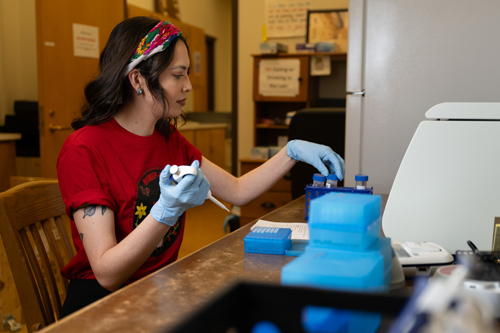According to the Centers for Disease Control and Prevention, the mental health of children worsened with nearly 10 percent of America’s youth reporting severe depression. Suicide is the second leading cause of death of those 10 to 34 years of age. By the time children are in crisis, they have been suffering for a very long time. That’s why it is urgent to get to a correct level of care and treatment as soon as possible.
Suicide and suicidal behaviors are acts of impulsivity and hopelessness. Children tend to have less developed frontal lobes which develop until their mid 20s. The frontal lobe is our executive assistant. The assistant may say, ‘Wait, is that a good idea? Here are the possible consequences of those things.’ But, if the frontal lobe isn’t fully developed, that person will be less able to be their own executive assistant than an adult with a fully developed frontal lobe.
The top risk factor for children, teens and young adults is often isolation. A normal phenomenon of the human condition is to want to have relationships. When children who are isolated, that’s an indication they’re not having that reciprocal relationship needed. It also happens with youth who don’t feel accepted because of a minority status, ethnicity or feeling left out. Acceptance is really important—feeling like you’re okay in one’s own skin.
One of the most important things for mental health distress prevention is openness to talk about it. As a culture, the more we say, “I’m sorry you feel like that. Can I help you? I’ll just sit with you.” That helps people feel connected and not alone or isolated. As opposed to a culture that says, “You’re fine. Don’t talk to me about that, other people have problems too.” This is unhelpful to someone who’s feeling bad in the moment.
However, there are people that no amount of comfort changes their neurotransmitters, and the cards they’ve been dealt genetically means they will have anxiety or depression. When a child, youth or adolescent already experiences depression, anxiety, suicidal ideation, suicidal behaviors or does self-harm, there are two things that can help. One is a safety plan. Be clear about individualized risk factors. What are the triggers? Who can the child call when they feel like that? If they can’t call someone, what are some other behaviors they can do to feel better? The other is to limit access to lethal means. The quicker a child can harm themselves at home, the more likely it is they will die by suicide.
Some signs that indicate youth have mental distress can include:
- Mood turns dark
- No longer has an outburst
- No reaction to parents saying they can’t go somewhere or do something they want to do
- Withdrawn, isolated
- Grades drop at school
- Withdraw from activities that used to bring them joy
Help that child with safety planning. Help guide them and change the narrative. “How can we help you feel better?”
Other actions that can help:
- Limit what children are exposed to through media, especially when they’re really young. Children interpret things differently.
- Set family rules with cell phones. Youth access information that they’re not ready to handle or they stay up all night on devices which disrupt their sleep and can predispose them to anxiety or depression-related illness later.
Our youth are struggling. Help move this stigma needle of mental health.



